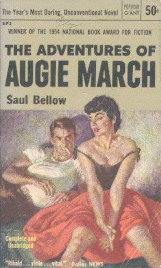Hi... John Snavely here. This is me working on a comic strip in 1994, using real pen and ink. Many of the comics on the Alum Falls website are scanned from my old black-and-white strips and colored on the computer. Now I do just about everything from scratch right on the computer. Maybe I'll go back to pen and ink. Sometimes I get to yearning for the old tactile process with lots of tedious cross-hatching. A Portrait of the Artist as an Old Man
I should make a disclaimer. You can't actually email me, because I'm a fictional character. The closest you can come to conversing with me is to email the true author of Alum Falls. You can find the link on the Alum Falls home page.
Why would an otherwise sane adult put his entire life into a comic strip on the Web? Not only is it incredibly egotistical, but it's damn time-consuming too. A few months in 1959 has taken me a couple of years. At this rate in 20 years I'll get as far as 1964!
In his essay, "Distractions of a Fiction-Writer" Saul Bellow has some words to say that may apply:
It occurs to a man that he is a writer. He doesn't obtain a certificate, like a doctor, or take the bar examination, like a lawyer; nor does he apprentice himself like a tool-and-die maker or get into a union like a bricklayer. A novel is written by a man who thinks of himself as a novelist. Unless he makes such an assumption about himself he simply can't do it. The thing is impossible. He has to encounter the world in a particular way. He goes within a sort of tissue which floats about the mind when he is well or collapses upon it when he isn't. It's hard to say exactly where this tissue comes from or what it is, but it is a sign of his autonomy.Let's say that I, John Snavely, have developed that sense of autonomy and seem to be able to exercise it only by rendering a life, mine, in the form of a Web comic strip. I am not a novelist (though I have long wanted to be one) but rather make my living as a commercial artist, no doubt more akin to Bellow's tool-and-die maker than to a professional fiction-writer. For me the comic strip is a happy wedding of words and pictures, a back door into the world of the novelist. Then, why a comic strip of my own life?Again Bellow is helpful:
I don't say the novelist knows what order is; but he relies upon the imagination to lead him toward it. In a work of art the imagination is the sole source of order. There are critics who assume that you must begin with order if you are to end with it. Not so. A novelist begins with disorder and disharmony, and he goes toward order by an unknown process of the imagination.There it is! By casting my disorganized, haphazard, willy-nilly life into an autobiographical work of art, order emerges!
Joseph Campbell said that as you age and look back on your life it more and more resembles a novel, with dominant recurring themes and symbols. And so it does.
Carl Jung tells us that the second half of life has, or should have, a different goal than the first half. Perhaps the goal of the second half of life is to transform the first half into a novel!
One last note: I mentioned above that there is behind the scenes a "true" flesh-and-blood author of my fictive self and the entire world of Alum Falls. I feel it incumbent on me to point out that even this bones-and-sinew individual has a major fictional component. For what is the visible part of his self, but a persona carefully if mostly unconsciously crafted to get him through life in a more or less tolerable manner? He too brings order from the chaos of his experience and presents it to the world as a somewhat coherent identity. So, let us all join in the brother(or sister)hood of legendary, mythologized, fictionalized individualities.

THE END
Alum Falls Home

